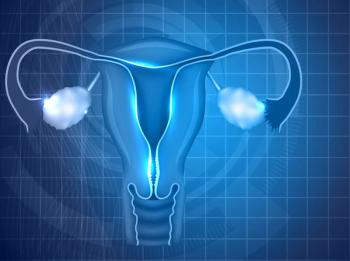
National Comprehensive Cancer Network Distress Thermometer Effectiveness
This study suggested that the National Comprehensive Cancer Network Distress Thermometer problem list does not easily identify concerns most associated with high distress and low quality of life in women with gynecologic cancers.
An article published in JCO Oncology Practice suggested that the National Comprehensive Cancer Network Distress Thermometer (DT) problem list does not easily identify concerns most associated with high distress and low quality of life (QOL) in women with gynecologic cancers.
Researchers suggested that properly identifying what is most concerning for this patient population through simple enhancements to the DT and characterizing vulnerabilities of the different patient subgroups would help physicians to better achieve patient-centered care while facing time restrictions in clinic.
“The continuous distress score of the DT effectively identified survivors of gynecologic cancer experiencing cancer-related distress,” the authors wrote. “However, our findings indicate that the DT problem list does not easily identify concerns most associated with high distress and QOL.”
Among 335 women participating in a gynecologic cancer cohort, demographic, clinical, psychological functioning, and DT data were detailed and problems from the DT list were ranked by prevalence, distress, and QOL. Logistic regression models then explored factors associated with problems that were common (≥25% prevalence) and correlated with distress and QOL.
The average age of the participants was 59.9 years, and most of the cohort were non-Hispanic white (97%) and had ovarian (44%) or uterine (42%) cancer. The mean DT score was 2.7 (SD, 2.7) and participants reported a mean of 7.3 problems (SD, 5.9 problems). The most common problems reported were fatigue (53.6%), worry (49.9%), and tingling (46.3%). Contrastingly, the least common problems were childcare (2.1%), fevers (2.1%), and substance abuse (1.1%).
Notably, report of some common problems, including tingling, sleep, memory, skin issues, and appearance, was not associated with large differences in distress or QOL. However, some rarer problems such as childcare, treatment decisions, eating, housing, nausea, and bathing/dressing were associated with worse distress or QOL. Moreover, younger age, lower income, and chemotherapy were risk factors observed across common problems that were associated with worse distress or QOL (fatigue, nervousness, sadness, fears, and pain).
With the large number of concerns that patients with cancer face, it is not possible for health care providers to address all of the problems indicated on the DT.
“Although listing all patients concerns may be justified, it is necessary to meaningfully prioritize patients’ most urgent issues during a clinical visit,” the authors wrote.
One way that researchers suggested clinicians could get around the limitations presented by the DT could be to begin the DT problem list with open-ended questions, such as: “In your own words, what has been most distressing to you, including problems that are not directly related to your cancer?” and “Which of these concerns would you like to talk about with your care team?” These questions could then be complemented by the DT problem list in order to help patients identify any additional problems that did not instantly come to mind.
“Clinical studies that reported using the problem list have demonstrated that it is possible to integrate the problem list into clinical services in an effective way, emphasizing that the successfulness of that endeavor relies on carefully designed procedures, including staff education, meaningful integration of social and clerical services into clinical services, and thoughtful timing when the tool is applied to patients,” the authors wrote.
Additionally, knowing which sources of distress are likely in specific patient groups could help clinicians to address the most urgent patient concerns more effectively according to the researchers. Therefore, characterizing vulnerabilities by, for example, cancer type, socioeconomic status, or life stage may be beneficial.
“On the basis of our findings, future work should examine the use of the problem list in clinical settings and whether the processes envisioned in clinical guidelines (identifying and discussing key problems with subsequent appropriate referrals) are being practiced and truly maximize patient QOL,” the authors wrote.
Reference:
Jewett PI, Teoh D, Petzel S, et al. Cancer-Related Distress: Revisiting the Utility of the National Comprehensive Cancer Network Distress Thermometer Problem List in Women with Gynecologic Cancers. JCO Oncology Practice. doi:10.1200/JOP.19.00471.
Newsletter
Stay up to date on recent advances in the multidisciplinary approach to cancer.















































































